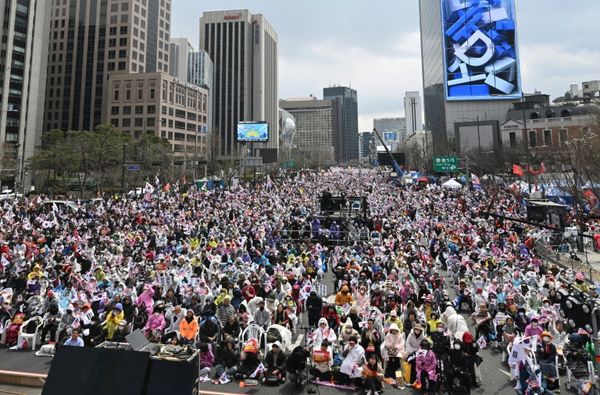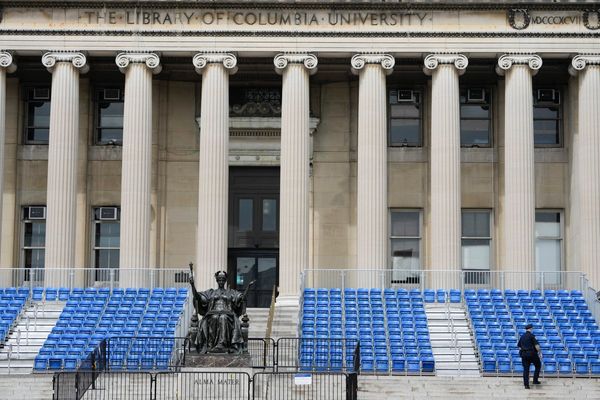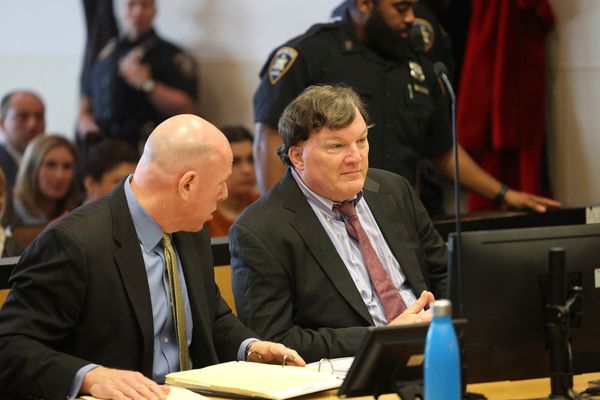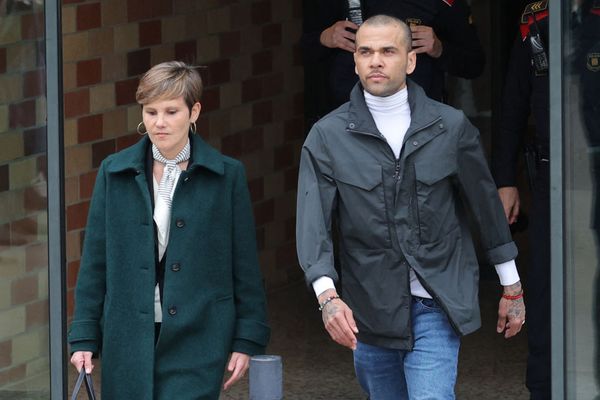
What was once the Odesa hotel was a smouldering ruin. The 19-storey building at 6 Primorskyi Boulevard had been transformed into a blackened shell. The Russians hit it last month with an Oniks anti-ship missile. Odesa’s once-bustling passenger terminal was damaged too, along with grain silos, warehouses and an Orthodox church.
This summer Russia pulled out from a year-long deal that allowed Kyiv to ship grain to the world. Ever since, it has pulverised Ukraine’s ports all along the coast of the Black Sea. There have been 13 massive attacks, which typically occur at night. The wail of sirens can be heard across Odesa. Then come the explosions, booming across the city and its picturesque bay.
Nineteen months after the full-scale invasion, Vladimir Putin’s war strategy is starkly visible. The concept – if you can call it that – is to bomb Ukraine into submission. Last week Russian troops unleashed two Iskander missiles. They landed on a cafe in the village of Hroza in Kharkiv oblast, where family and friends had gathered to say their farewells to a soldier killed in battle.
The mourners became the war’s latest grisly victims: 52 people were killed. It was the deadliest single attack in a region that has seen relentless Russian bombardment. The following day, early on Friday, Moscow bombed downtown Kharkiv. Rescuers pulled the body of a 10-year-old boy from the rubble. He had been asleep. Also killed was his grandmother. His 11-month-old brother was injured.
Putin’s cynical calculus is that the west will eventually tire of a war with no end in sight. He is waiting for January 2025 and the return of Donald Trump as US president. That, Moscow thinks, would mean a swift end to White House military assistance to Kyiv. Russia’s geopolitical goals are unchanged: to eradicate Ukraine – its government, culture and language – and to transform it into a loyal Russian province.
And yet amid this terrible carnage there are a few positive signs. Ukraine’s counter-offensive on land – designed to liberate the south of the country, and to bisect occupying Russian forces – has been going slowly. It has proved difficult and costly. Ukrainian brigades equipped with western battle tanks have struggled to advance through minefields and entrenched Russian positions.
In the Black Sea, however, Kyiv has made remarkable progress. Drones and UK-supplied Storm Shadow missiles have destroyed targets in Crimea. These include air defence batteries, a shipyard and the white neo-classical headquarters of Russia’s Black Sea fleet. Last week satellite images revealed Moscow’s mighty navy has left the deep water port of Sevastopol. It has gone east, to the safer Russian harbour of Novorossiysk.
Meanwhile, merchant ships are sailing again. According to Yurii Vaskov, Ukraine’s deputy minister responsible for seaports and maritime, more than 30 vessels have arrived or departed from Odesa and the neighbouring ports of Chornomorsk and Pivdennyi. They have carried cargoes of grain, sunflower oil and metals, including a consignment of iron ore.
So far Ukraine’s unilateral “humanitarian” grain corridor appears to be working. Under the old UN and Turkey-brokered deal Russia was able to “inspect” containers as they made their way through the Black Sea, causing delays. Now ships can move unimpeded. Their route goes through Ukrainian territorial waters before passing Romania and Bulgaria, both Nato members.
Speaking to the Observer, Vaskov said Ukraine had every right to export grain, to feed countries in Africa and the Middle East. He said Russia was currently exporting 13-14m tonnes a month via the Black Sea. “Why should Ukraine stop?” he asked. President Volodymyr Zelenskiy’s government had guaranteed to compensate owners if a ship was sunk, he explained.
Last week the UK Foreign Office – acting on a report from British intelligence – said Moscow was indeed plotting to blow up civilian vessels. The “pernicious” plan would see its submarines release mines in the middle of the shipping lane. “Russia almost certainly wants to avoid openly sinking civilian ships, instead falsely laying blame on Ukraine for any attacks against civilian vessels in the Black Sea,” the Foreign Office said.
Vaskov said crew members using the route were not scared. “I’ve spoken to them. They told me they had visited other places around the world that have seen war. Their boats are not military targets,” he said. If Russia did try and attack civilian shipping this would drive up insurance costs for its own vessels, he pointed out. Ukraine was also sending grain via its Danube ports – which Russia has bombed – and by road, he added.
For now, the number of cargo vessels making this perilous journey is small. Some believe that with Russia’s Black Sea navy virtually confined to port, the new corridor will be as busy as the old one. Others are sceptical. “We got used to Odesa bay being full of boats and tug ships. That’s stopped. I don’t expect a significant amount of traffic moving along the corridor,” said Oleg Kostyuk, CEO of Global Transport Investments, an Odesa logistics company.
Kostyuk likened the dynamic situation in the Black Sea to “game theory”. Russia was capable of sinking Ukrainian-bound ships, but Kyiv could hole Russian ones, he noted. The Black Sea was key to Ukraine’s economic survival. The grain harvest had shrunk from 100m tonnes before the invasion, to 77m last year, and an expected 50m tonnes this season. “Nobody invented a cheaper way to transport grain than shipping. You can put 60,000 tonnes in one ship,” he added.
The new defence secretary Grant Shapps floated the idea last weekend that the British navy might play a role in the Black Sea, escorting shipping. Downing Street quickly ruled this out. Behind the scenes, Ukraine’s allies have been helping in other ways. Alina Frolova – a former Ukrainian deputy defence minister - said the US was quietly providing Kyiv with reconnaissance and satellite data. “They are constantly monitoring,” she said.
Despite recent setbacks, Russia has plenty of “resources”, experts say. They include kamikaze drones, Kalibr cruise missiles and aviation. Andrii Klymenko, head of the monitoring group at the institute of Black Sea strategic studies, said Moscow could inflict further damage. “Russia’s military grouping in Crimea remains quite powerful. It is capable of significantly influencing the situation in the northwestern and western Black Sea,” he said.
The view from Odesa’s port last week was deceptively calm. Two vessels – the Equator and Maranta – chugged across the bay. “We used to have 2,500 shipping calls every year,” Kostyuk, the logistics director, reflected. “There were passengers as well, leaving for the Mediterranean and beyond. There was hustle and bustle, 24/7. Now it’s quiet.”







